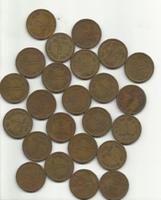洪水填充算法
给出一个矩阵;矩阵代表一个屏幕。屏幕的每个元素 (i, j) 表示为一个像素,该像素的颜色用不同的数字标记。在该算法中,当像素已经处于选定的先前颜色时,将用新颜色填充像素。如果前一个颜色不是前一个颜色,则不会填充该像素。填充一个像素后,它会检查它的上、下、左、右像素来做同样的事情。
思路其实很简单,首先,我们检查选中的位置是否用之前的颜色着色,否则,算法将不起作用。否则,它将用新颜色填充该像素并为其四个邻居重复。
输入和输出
Input:The screen matrix:
1 1 1 1 1 1 1 1
1 1 1 1 1 1 0 0
1 0 0 1 1 0 1 1
1 2 2 2 2 0 1 0
1 1 1 2 2 0 1 0
1 1 1 2 2 2 2 0
1 1 1 1 1 2 1 1
1 1 1 1 1 2 2 1
Output:
Screen matrix after flood fill
1 1 1 1 1 1 1 1
1 1 1 1 1 1 0 0
1 0 0 1 1 0 1 1
1 3 3 3 3 0 1 0
1 1 1 3 3 0 1 0
1 1 1 3 3 3 3 0
1 1 1 1 1 3 1 1
1 1 1 1 1 3 3 1
算法
fillScreen(x, y, prevColor, newColor)
输入:开始的 (x,y) 坐标、以前的颜色和新颜色。
输出 -如果可能,将颜色从以前更改为新颜色后的屏幕。
Beginif (x, y) not in the screen range, then
return
if color of (x, y) ≠ prevColor, then
return
screen[x, y] := newColor
fillScreen(x+1, y, prevColor, newColor)
fillScreen(x-1, y, prevColor, newColor)
fillScreen(x, y+1, prevColor, newColor)
fillScreen(x, y-1, prevColor, newColor)
End
示例
#include<iostream>输出结果#define M 8
#define N 8
using namespace std;
int screen[M][N] = { //屏幕尺寸和颜色
{1, 1, 1, 1, 1, 1, 1, 1},
{1, 1, 1, 1, 1, 1, 0, 0},
{1, 0, 0, 1, 1, 0, 1, 1},
{1, 2, 2, 2, 2, 0, 1, 0},
{1, 1, 1, 2, 2, 0, 1, 0},
{1, 1, 1, 2, 2, 2, 2, 0},
{1, 1, 1, 1, 1, 2, 1, 1},
{1, 1, 1, 1, 1, 2, 2, 1}
};
void fillScreen(int x, int y, int prevColor, int newColor) { //用新颜色替换 (x,y) 的先前颜色
if (x < 0 || x >= M || y < 0 || y >= N) //当点超过屏幕时
return;
if (screen[x][y] != prevColor) //如果 point(x,y) 不包含 prevColor,则什么都不做
return;
screen[x][y] = newColor; //更新颜色
fillScreen(x+1, y, prevColor, newColor); //对于 (x,y) 的右边
fillScreen(x-1, y, prevColor, newColor); //对于 (x,y) 的左边
fillScreen(x, y+1, prevColor, newColor); //对于 (x,y) 的顶部
fillScreen(x, y-1, prevColor, newColor); //对于 (x,y) 的底部
}
void floodFill(int x, int y, int newColor) {
int prevColor = screen[x][y]; //在更换新颜色之前先取颜色
fillScreen(x, y, prevColor, newColor);
}
int main() {
int x = 4, y = 4, newColor = 3;
cout << "上一画面: "<< endl;
for (int i=0; i<M; i++) {
for (int j=0; j<N; j++)
cout << screen[i][j] << " ";
cout << endl;
}
cout << endl;
floodFill(x, y, newColor); //从 (4, 4) 开始,使用新颜色 3
cout << "更新画面: "<< endl;
for (int i=0; i<M; i++) {
for (int j=0; j<N; j++)
cout << screen[i][j] << " ";
cout << endl;
}
}
Previous screen1 1 1 1 1 1 1 1
1 1 1 1 1 1 0 0
1 0 0 1 1 0 1 1
1 2 2 2 2 0 1 0
1 1 1 2 2 0 1 0
1 1 1 2 2 2 2 0
1 1 1 1 1 2 1 1
1 1 1 1 1 2 2 1
更新画面:
1 1 1 1 1 1 1 1
1 1 1 1 1 1 0 0
1 0 0 1 1 0 1 1
1 3 3 3 3 0 1 0
1 1 1 3 3 0 1 0
1 1 1 3 3 3 3 0
1 1 1 1 1 3 1 1
1 1 1 1 1 3 3 1
以上是 洪水填充算法 的全部内容, 来源链接: utcz.com/z/359584.html





